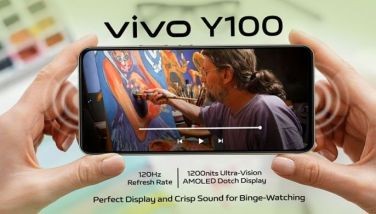Young UP physicist blazes trail in spectral imaging
Wilma Oblefias, a new Ph.D. graduate from the UP National Institute of Physics (NIP), has successfully measured light emissions of fluorescent materials. This has applications toward simpler, faster, cheaper, and non-destructive ways of analyzing living cells and transistors. Oblefias is only 26 years old.
The young physicist’s dissertation, titled “Spectral Microscopy of Photoemission Spectra: Estimation, Unmixing, and Noise Effects,” presents a method which can be used in medical biology to localize cancer cells, diagnose abnormalities in tissues, and monitor toxicity and food intake of cells in organisms.
The method can also be used in industries, particularly in testing semiconductors without breaking the transistors apart and in identifying soil minerals.
With her dissertation, Oblefias has lived up to expectations as an awardee of a grant from the UP Diliman Office of the Vice Chancellor for Research and Development she received in the first semester of AY 2006-2007.
Criteria for the grant included the significance of the work to current issues and potential for technology innovation and commercialization.
Oblefias’ specialization involves studying photoemissions or light emitted by materials. The study is done using cameras and microscopes. Photoemissions or fluorescence provide a window to some properties of the material.
The spectra of the material may also carry fingerprints of its components. For example, chromosomes emit distinct spectra, which can be used as labels. The combination of labels of chromosomes 9 and 22 suggests a “translocation,” which is a sign of chronic myelogenous leukemia. The analysis of these spectra will help determine a person’s risk of contracting this disease, the dissertation asserts.
When these labels get mixed, as they always do if the sample is a combination of emitters, it is the scientist’s goal to unmix them so that the components of the materials can be pinpointed and their concentration known.
In the case of integrated circuits (ICs), unmixing their emissions can help in discovering whether the ICs have damaged component transistors. If transistors are arranged in an integrated circuit, like those used in computer random access memory (RAM) and microprocessors, they may number in the millions or even billions.
More transistors in the ICs imply greater speed of the device. However, this also means greater heat production which may cause damage.
Damaged transistors are difficult to identify in such a dense state using common electrical diagnostics. Using spectral imaging can do the job without breaking the IC apart. According to the dissertation, damaged transistors tend to produce strong photoemissions in the near infrared.
In studying photoemissions, Oblefias configured her own experimental set-up, which was relatively simple. It consisted of a camera which employs a “charge-coupled device (CCD),” and filters, and which separately capture red, green, and blue.
The other parts of the set-up were a filtered mercury lamp to light non-fluorescent samples, a microscope, and a desktop computer. A “line spectrometer,” a separate device that captures spectra, was used to establish a reference spectrum. Her study proved that a set-up as simple as hers was sufficient for spectral estimation.
With her experimental set-up, Oblefias was able to invent a method of unmixing spectra, with results that were found satisfactory through various simulations. This enabled Oblefias to apply her method on actual transistors and chromosomes.
She devised another set-up using a CCD camera and filters to test transistors. A set of filters was mounted on a computer-controlled rotating wheel assembly to give a rapid series of images. The results were “very good” in classifying transistors as either good, leaky, or broken. Her estimates on the transistor were confirmed through electrical diagnostics.
Oblefias’ set-up was also able to determine the concentration of different dyes in the stained chromosomes, thus establishing the applicability of her method to biological samples.
Through the dissertation, she was able to give the system requirements for a much simpler method of spectral measurement and unmixing.
At the same time, she was able to come up with a “look-up” table that would help other researchers estimate the possible errors they might commit in measuring spectra using her method.
In the future, these findings can be used to invent simpler, faster, less expensive, and non-destructive machines for use in electronics and biotechnology.
Oblefias is from Tayabas, Quezon and teaches Physics at UP Diliman. She belongs to NIP’s Instrumentation Physics Laboratory and the National Research Council of the
- Latest




















 Partner
Partner





